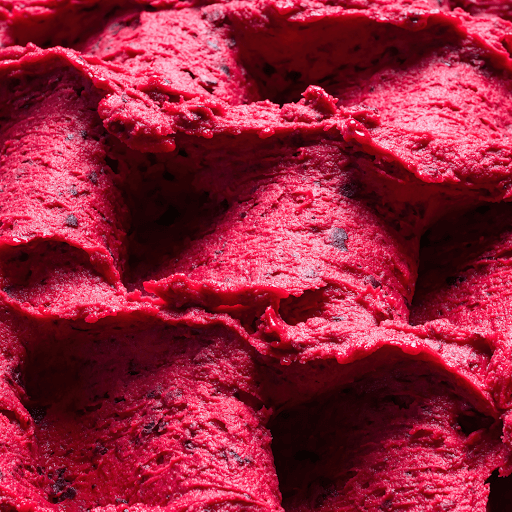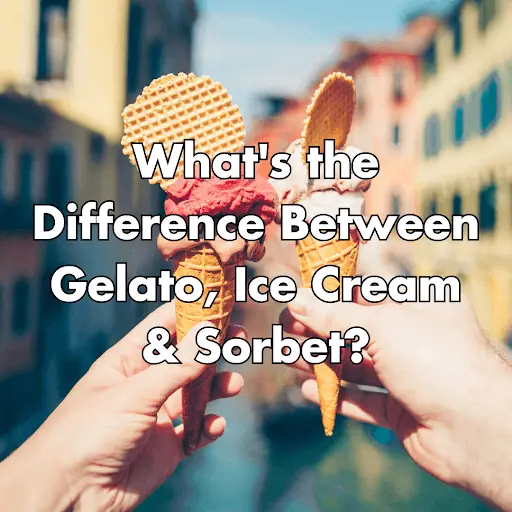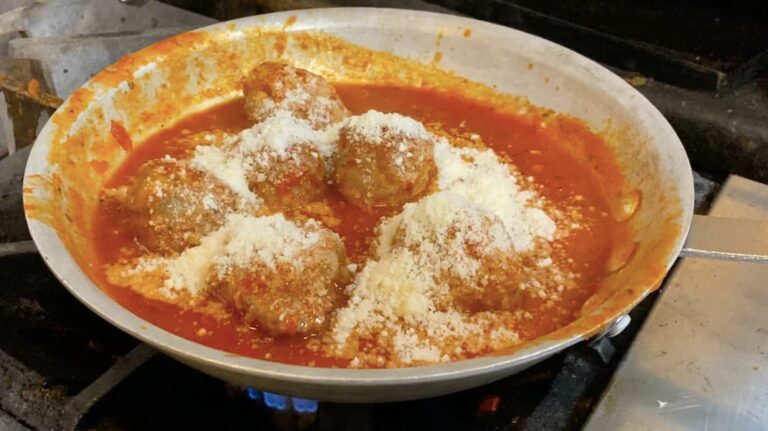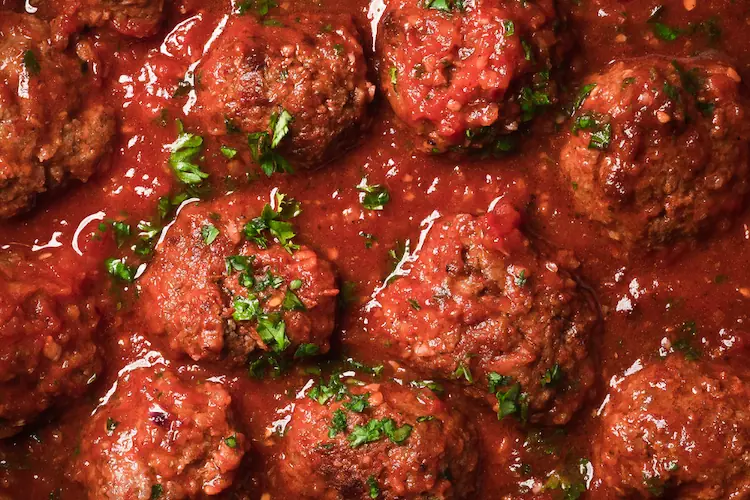If you’re like me, you’ve probably stood in the frozen section of a grocery store, trying to decide between gelato, ice cream, or sorbet.
And you might have stood there wondering: What’s the actual difference between the three?
At first glance, they all seem like delicious frozen treats, but each has unique qualities that set them apart.
Today, I’m chatting about the key differences and getting the inside scoop on these tasty treats!
Gelato vs. Ice Cream vs. Sorbet: The Big Difference
The primary distinctions come down to ingredients, texture, temperature, and production process. Here’s a quick breakdown:
- Gelato: An Italian frozen dessert with a higher proportion of milk and less cream, resulting in a denser, silkier texture and intense flavors.
- Ice Cream: American-style ice cream contains more milk fat, egg yolks, and air, making it a creamier, fluffier frozen treat.
- Sorbet: A dairy-free option made with fruit juice or fruit purée, sugar syrup, and water, offering a lighter, refreshing, palate-cleansing experience.

Gelato: A Perfect Italian Dessert
Gelato, meaning “frozen” in Italian, is beloved for its smooth texture, intense flavors, and lower fat content compared to regular ice cream. Traditional Italian gelato is churned at a much slower speed, incorporating less air, which makes it denser and silkier.
The main ingredient is usually milk, with less butterfat than ice cream (typically 4-9% vs. 14-25% in American ice cream). This lower fat content allows flavors—whether dark chocolate, fresh fruits, or classic flavors like pistachio—to shine through.
Another unique aspect of gelato is the way it’s served. Unlike traditional ice cream, gelato is kept at a slightly warmer temperature, which enhances its silky texture and allows it to melt more evenly on your tongue.
If you’ve ever wondered why gelato tastes so rich despite having less cream and fewer calories than ice cream, it’s because the higher proportion of milk combined with the slower churning process creates an ultra-creamy mouthfeel.

American Ice Cream: The Creamier, Fluffier Treat
American ice cream manufacturers rely on higher fat content (thanks to more cream and added fat like egg yolks) and a faster churning process that whips in air, creating a lighter, fluffier, yet rich texture.
The legal definition of ice cream in the United States requires at least 10% milk fat, though premium brands often have even more. Traditional ice cream is also served at a colder temperature, giving it a thicker texture that melts more slowly.
Another thing to consider is the wide range of flavors and styles in the world of American ice cream. From soft-serve ice cream to ultra-premium brands that use natural ingredients, ice cream is a popular choice for its creamy texture and variety of different flavors.

Sorbet: The Dairy-Free, Thirst-Quenching Option
Sorbet is an excellent choice for those with lactose intolerance or anyone craving a true thirst-quencher. It’s made with fruit purée or fruit juice, sugar syrup, and water, skipping dairy products entirely.
The higher water content of sorbet makes it more refreshing but also means it melts faster. It’s often used as a palette cleanser between courses at a fancy dinner party.
If you’re looking for the best sorbet, opt for those made with fresh fruits and fewer added ingredients. A high-quality sorbet should have intense flavors without artificial sweeteners or stabilizers.
Production Process: Churning Speed & Air Content
One of the biggest differences between these frozen desserts is how they’re made:
- Gelato: Churned at a much slower speed, incorporating less air, creating a denser texture.
- Ice Cream: Churned faster, adding more air, resulting in a creamier texture.
- Sorbet: No dairy, just fruit and sugar, leading to an icy, refreshing finish.
The ratio of dairy in these frozen desserts also plays a role in their texture. Gelato has a higher proportion of milk, while ice cream has more cream and added fat to create a richer mouthfeel.
Temperature Matters: How It Affects Texture & Flavor
- Gelato is served at a slightly warmer temperature than ice cream, making it silkier and smoother on your taste buds.
- Ice cream is kept at a colder temperature, meaning it holds its structure longer but needs to be softened before scooping.
- Sorbet is frozen solid but melts quickly because of its higher water content.

Frequently Asked Questions (FAQs): Answering Your Frozen Dessert Questions
Q: What’s the difference between sherbet and sorbet?
A: Sherbet contains a small amount of dairy, typically milk or cream, whereas sorbet is entirely dairy-free.
Q: Is gelato healthier than regular ice cream?
A: Gelato has less fat and fewer calories than traditional ice cream, but because it’s denser, you might eat more of it!
Q: What’s the best sorbet flavor?
A: That depends on your preference! Citrus sorbets (like lemon or grapefruit) are the best palate cleansers, while berry sorbets (like raspberry) pack intense flavors.
Q: Can I make non-dairy ice cream at home?
A: Absolutely! Vegan ice cream can be made using coconut milk, cashew milk, or oat milk instead of dairy.
The Final Scoop
There’s no wrong choice when it comes to each of these frozen treats! Whether you go for the dense, intense flavors of gelato, the rich creaminess of traditional ice cream, or the refreshing simplicity of sorbet, each has its own unique qualities.
Next time you’re standing in front of the freezer aisle or a gelato shop, you’ll know exactly what to pick!
What’s your favorite frozen dessert? Let me know in the comments!










